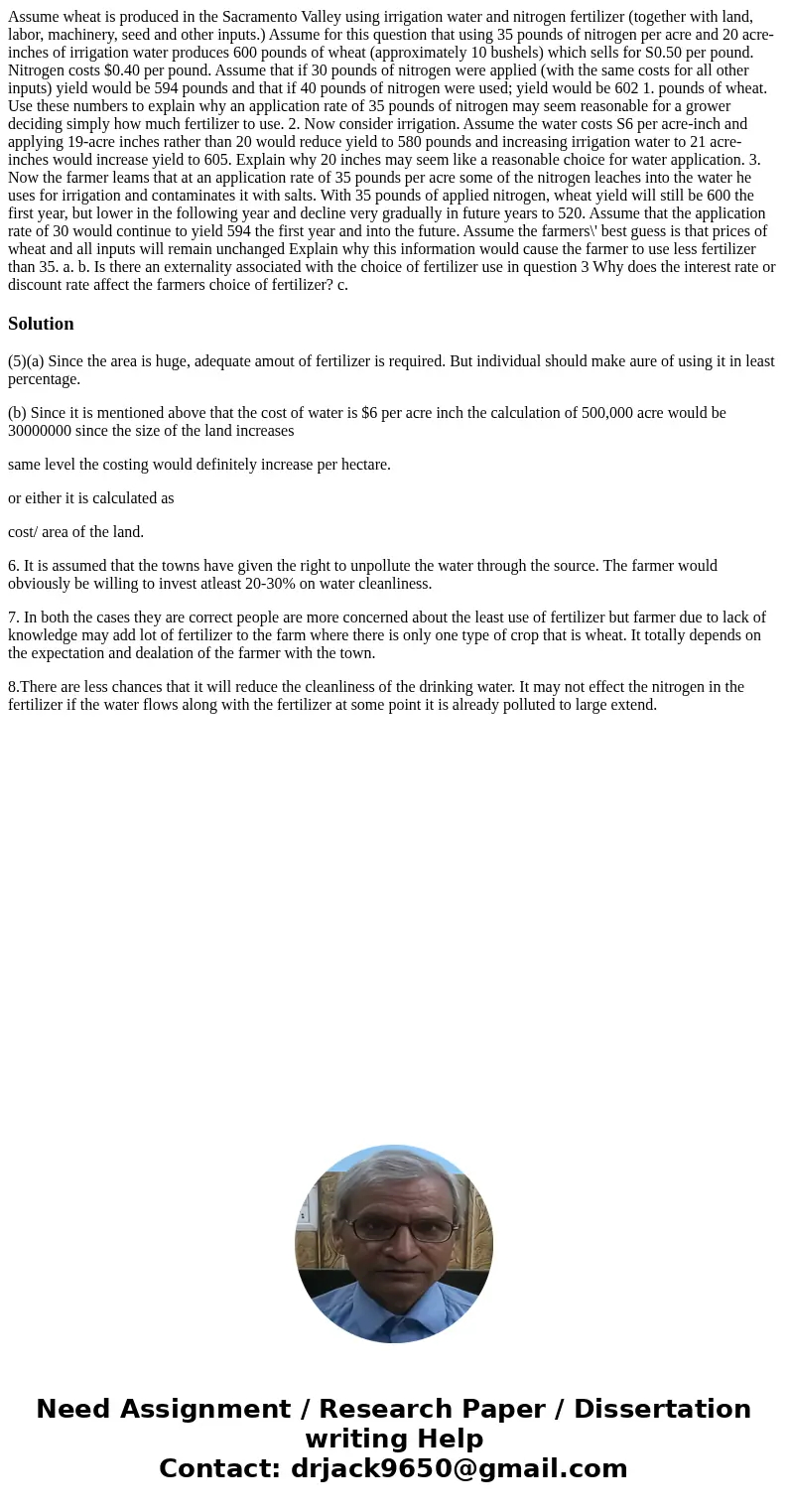Assume wheat is produced in the Sacramento Valley using irrigation water and nitrogen fertilizer (together with land, labor, machinery, seed and other inputs.) Assume for this question that using 35 pounds of nitrogen per acre and 20 acre-inches of irrigation water produces 600 pounds of wheat (approximately 10 bushels) which sells for S0.50 per pound. Nitrogen costs $0.40 per pound. Assume that if 30 pounds of nitrogen were applied (with the same costs for all other inputs) yield would be 594 pounds and that if 40 pounds of nitrogen were used; yield would be 602 1. pounds of wheat. Use these numbers to explain why an application rate of 35 pounds of nitrogen may seem reasonable for a grower deciding simply how much fertilizer to use. 2. Now consider irrigation. Assume the water costs S6 per acre-inch and applying 19-acre inches rather than 20 would reduce yield to 580 pounds and increasing irrigation water to 21 acre-inches would increase yield to 605. Explain why 20 inches may seem like a reasonable choice for water application. 3. Now the farmer leams that at an application rate of 35 pounds per acre some of the nitrogen leaches into the water he uses for irrigation and contaminates it with salts. With 35 pounds of applied nitrogen, wheat yield will still be 600 the first year, but lower in the following year and decline very gradually in future years to 520. Assume that the application rate of 30 would continue to yield 594 the first year and into the future. Assume the farmers\' best guess is that prices of wheat and all inputs will remain unchanged Explain why this information would cause the farmer to use less fertilizer than 35. a. b. Is there an externality associated with the choice of fertilizer use in question 3 Why does the interest rate or discount rate affect the farmers choice of fertilizer? c.
(5)(a) Since the area is huge, adequate amout of fertilizer is required. But individual should make aure of using it in least percentage.
(b) Since it is mentioned above that the cost of water is $6 per acre inch the calculation of 500,000 acre would be 30000000 since the size of the land increases
same level the costing would definitely increase per hectare.
or either it is calculated as
cost/ area of the land.
6. It is assumed that the towns have given the right to unpollute the water through the source. The farmer would obviously be willing to invest atleast 20-30% on water cleanliness.
7. In both the cases they are correct people are more concerned about the least use of fertilizer but farmer due to lack of knowledge may add lot of fertilizer to the farm where there is only one type of crop that is wheat. It totally depends on the expectation and dealation of the farmer with the town.
8.There are less chances that it will reduce the cleanliness of the drinking water. It may not effect the nitrogen in the fertilizer if the water flows along with the fertilizer at some point it is already polluted to large extend.

 Homework Sourse
Homework Sourse